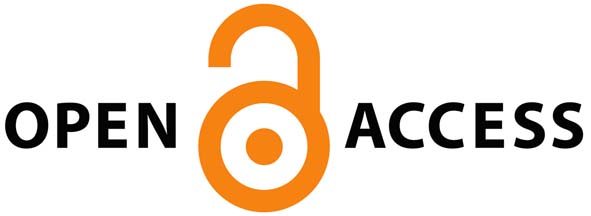| Are we going to survive transplant during the coronavirus disease 2019 outbreak: A case report | |
| DOI: 10.5606/e-cvsi.2023.1492 | |
| Özge Altaş, Mustafa Özgür, Mehmet Aksüt, Kaan Kırali | |
| Department of Cardiovascular Surgery, Kartal Koşuyolu High Specialization Education and Research Hospital, Istanbul, Türkiye | |
| Keywords: COVID-19, heart transplantation, immunosuppressive therapy | |
Coronavirus disease 2019 (COVID-19) creates a challenge on donor selection, posttransplant management, and immunosuppressive
therapy. A question arises about continuing heart transplantation due to risk of immunosuppressive therapy, as well as exposure
during hospitalization. After the identification of the first COVID-19 patient, our center conducted the management of selection and
treatment of candidates and continued to perform cardiac transplantations. Herein, we present two cases who underwent successful heart
transplantation after the determination of patient zero in Türkiye to highlight clinical implications by describing our clinical principle in
the ethical knowledge of the International Society for Heart and Lung Transplantation COVID-19 task force statement regarding heart
transplantation. |
|
Coronavirus disease 2019 (COVID-19) creates
a challenge in donor selection, posttransplant
management, and immunosuppressive therapy.
Underlying heart and respiratory disease, advanced
age, and diabetes have been determined to play a
crucial role in mortality, whereas patients having
immunosuppressive therapy were also reported to
be at risk.[1-3] Consequently, a question arises about
continuing heart transplantation (HTx) due to risk of
immunosuppressive therapy, as well as exposure during
hospitalization. |
|
|
CASE PRESANTATION
|
|
The first patient was a 42-year-old female with
ischemic cardiomyopathy waiting on the list since
October 2018, and the patient had been in self-isolation
since the beginning of the pandemic. The patient had
a history of ventricular fibrillation resulting in acute
myocardial infarction followed by cardiopulmonary
resuscitation. At the time of hospital admission for
surgery, the patient was clinically screened, and
computed tomography (CT) imaging was evaluated.
Finally, elective surgery was uneventfully performed
on March 13 with an ischemic time of 150 min. The
patient was moved out of the intensive care unit (ICU)
on the second postoperative day and discharged home
by the seventh postoperative day. The second patient, a 32-year-old female, had been hospitalized since July 2019, waiting for a transplant. The patient underwent Fontan circulation for a univentricular heart with tricuspid atresia 24 years ago. The reverse transcriptase polymerase chain reaction test came negative, and the assessment of CT was normal. Urgent surgery was completed on March 20 with an ischemic time of 152 min. The patient was extubated after 16 h and discharged to the ward on Day four. Recovery was uneventful, and the patient was discharged home by Day 16. During recovery, the mean white blood cell and neutrophil counts were, respectively, 15.3±5.3 x 109/L and 82±12.7% for the first patient and 15±8.4 x 109/L and 88±8.2% for the second patient. Demographic parameters prior to surgery are summarized in Table 1. Both donors were from out of Istanbul without history of epidemiological exposure or fever during hospitalization. Their CT scans were normal, and both donors were negative for COVID-19. In the light of current information and guidance from the International Society for Heart and Lung Transplantation regarding the COVID-19 pandemic, we did not make a change in induction and maintenance of immunosuppressive therapy.[4] For the initial phase of induction therapy, rabbit anti-thymocyte globulin was preoperatively used once due to its highly potent effects, which may cause cytokine release syndrome.[5] Glucocorticoids were first-line agents for induction and maintenance therapy. In our transplant program, we use a quadruple-drug maintenance regimen consisting of calcineurin inhibitor (cyclosporine), lowering with everolimus, an antiproliferative agent (mycophenolate mofetil), and a glucocorticoid (gradually rapid tapered) as a renal protective strategy. The mean postoperative cyclosporine and everolimus concentrations were 100.6±12.8 ng/mL and 4.3±1.08 ng/mL. The patients never had lymphopenia in the outpatient clinic. The examination of renal and liver function (urea, creatinine, serum glutamic-pyruvic transaminase, and serum glutamic-oxaloacetic transaminase) was normal. Surveillance biopsies were abolished against the risk of exposure in those that were not sensitized or had low risk for rejection. We preferred to use consecutive echocardiographic assessment for the detection of allograft rejection. Swab specimens were collected prior to discharge of patients and reported negative. |
|
With the global outbreak of coronavirus, the organ
transplant activity run into danger. Looking on the
bright side, the experience from reviews of previous
outbreaks on severe acute respiratory syndrome and
Middle East respiratory syndrome suggests that
immunosuppressed patients are not associated with
higher risk of fatal complications compared to the
general population.[2,6] Our national pandemic coordination board, the Ministry of Public Health, released recommendations for limiting all planned surgery; therefore, we focused on more urgent patients, preserved the sources to more needy ones, and tried to prevent potential spread among healthcare workers and families of patients. However, the answer to whether transplant surgery should be performed or not is going to be diverse depending on the situation and epidemiology of the virus in your area. We emphasized the waitlist mortality risk and potential benefit for all listed hospitalized or at-home patients, identified selected patients that should not be postponed, and accepted good quality organs from proven donors to reduce long ICU stay and early graft dysfunction. Considering the epidemiological study from Ren et al.,[4] which showed that transplant patients taking appropriate precautions had low rate of COVID-19 infection, we evaluated our hospitalized patients and directed the medically stable ones to self-isolation at home. And it is just as well that we managed to perform transplantation in one of our self-isolated patients. We also considered alternatives such as left ventricular assist devices; nevertheless, it should not be utilized in elective patients to limit resources or avoid nosocomial infections.[5] A recent study from Italy showed stable transplantation activity in contrast to our decreasing donor activity (75%) compared to the first quarter of the last year.[3] We are not there yet where every organ donor is routinely testing. Our protocol for the patients requiring HTx are as follows: (i) CT and rapid polymerase chain reaction are performed for already hospitalized patients; (ii) clinical evaluation and CT are performed for patients waiting at home; (iii) patients on the elective list must be privately transported and accompanied by one and the same relative all the time; (iv) recipients and relatives are retested and receive education for preventative precautions prior to discharge; (v) the donor must have no history of contact with a suspected or confirmed COVID-19 patient and of travelling abroad over the past 30 days; (vi) the donor must have no signs of pneumonia in CT or no positive nasopharyngeal swab result for COVID-19; (vii) the operation room, ICU, and the postoperative ward should be separated to avoid in-hospital disease transmission; (viii) shift schedules should be organized for related medical staff; (ix) immunosuppressive therapy should be continued unless otherwise indicated to reduce or discontinue doses. Our detailed approach to HTx during the global pandemic is described in Figure 1. Donors who are positive for both clinical and epidemiological screenings are considered high risk to be used for transplantation. If the donor tested positive for COVID-19, the organs should not be used for transplant. Computed tomography has been widely recommended to clarify patients with suspected COVID-19.[2] However, during the pandemic, the identification of COVID-19 pneumonia from pulmonary edema caused by heart failure was one of the major challenges for physicians. Most of the radiological features presented with COVID-19 can be seen in many systemic processes, and multiple underlying medical comorbidities, concomitant infections, and volume overload could influence the CT findings. Although the fatality rate is low (1-8.6%), patients with cardiac comorbidities present with a more severe outcome of COVID-19.[3] In conclusion, we believe that patients having HTx are already used to social distancing and applying sanitization measures. Sharing knowledge and transparency with patients and other centers are important to come out with less damage through this pandemic. Patient Consent for Publication: A written informed consent was obtained from both of the patient. Data Sharing Statement: The data that support the findings of this study are available from the corresponding author upon reasonable request. Author Contributions: Resources, materials, data collection, writing, literature search: Ö.A.; Data collection, materials: M.Ö., Materials, literature search, review: M.A.; Supervision, review: K.K. Conflict of Interest: The authors declared no conflicts of interest with respect to the authorship and/or publication of this article. Funding: The authors received no financial support for the research and/or authorship of this article. |
|
1) Latif F, Farr MA, Clerkin KJ, Habal MV, Takeda K, Naka
Y, et al. Characteristics and outcomes of recipients of heart
transplant with coronavirus disease 2019. JAMA Cardiol
2020;5:1165-9. doi: 10.1001/jamacardio.2020.2159.
2) Kumar D, Tellier R, Draker R, Levy G, Humar A. Severe Acute
Respiratory Syndrome (SARS) in a liver transplant recipient
and guidelines for donor SARS screening. Am J Transplant
2003;3:977-81. doi: 10.1034/j.1600-6143.2003.00197.x.
3) DeFilippis EM, Farr MA, Givertz MM. Challenges
in heart transplantation in the era of COVID-
19) Circulation 2020;141:2048-51. doi: 10.1161/
CIRCULATIONAHA.120.047096.
4) Ren ZL, Hu R, Wang ZW, Zhang M, Ruan YL, Wu ZY,
et al. Epidemiologic and clinical characteristics of heart
transplant recipients during the 2019 coronavirus outbreak
in Wuhan, China: A descriptive survey report. J Heart Lung
Transplant 2020;39:412-7. doi: 10.1016/j.healun.2020.03.008.
|
|














